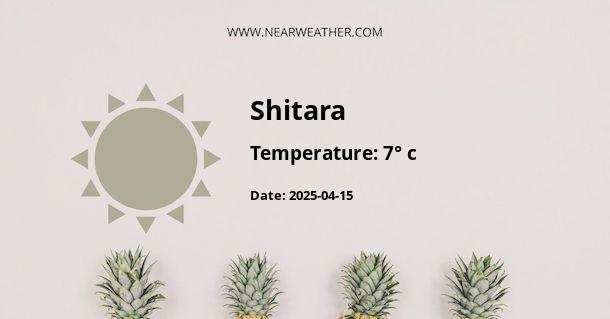Climate and Weather in Shitara, Japan
Shitara is a picturesque town located in the Aichi Prefecture of Japan. Known for its beautiful landscapes and rich cultural heritage, Shitara experiences a unique climate throughout the year. In this article, we will explore the weather patterns, temperatures, precipitation, and other climatic factors that shape the region's climate.
Geographical Location
Shitara is situated in the eastern part of Aichi Prefecture, approximately 200 kilometers southwest of Tokyo. It lies in a hilly area, surrounded by mountains and forests. The town is located inland, away from the coastal areas, which has a significant impact on its climate.
Seasonal Temperatures
Shitara experiences four distinct seasons, each with its own unique temperatures and weather conditions.
| Season | Average Temperature (°C) |
|---|---|
| Spring (March to May) | 10 to 20 |
| Summer (June to August) | 25 to 30 |
| Autumn (September to November) | 15 to 25 |
| Winter (December to February) | 0 to 10 |
During spring, temperatures gradually rise from the colder winter months, with average temperatures ranging between 10 to 20 degrees Celsius. Spring is known for its cherry blossoms, which attract visitors from all over Japan.
Summer in Shitara can be hot and humid, with temperatures ranging from 25 to 30 degrees Celsius. It is the wettest season, with frequent rainfall and occasional typhoons. It is advisable to carry an umbrella or raincoat during this time.
Autumn brings cooler temperatures, ranging from 15 to 25 degrees Celsius. The region is known for its vibrant autumn foliage, attracting nature enthusiasts and photographers to capture the stunning colors of the changing leaves.
Winter in Shitara is relatively mild, with temperatures ranging from 0 to 10 degrees Celsius. While snowfall is not as common as in other parts of Japan, the surrounding mountains often receive a dusting of snow, creating a picturesque winter scenery.
Precipitation
Shitara receives a moderate amount of rainfall throughout the year, with the majority of precipitation occurring during the summer months.
| Month | Average Rainfall (mm) |
|---|---|
| January | 50 |
| February | 70 |
| March | 90 |
| April | 130 |
| May | 160 |
| June | 200 |
| July | 220 |
| August | 190 |
| September | 170 |
| October | 120 |
| November | 70 |
| December | 50 |
The rainy season, known as "tsuyu," occurs from mid-June to mid-July in Shitara. During this time, the region experiences increased rainfall and higher humidity levels. It is advisable to carry an umbrella or raincoat when visiting during this period.
Wind and Climate Influences
Shitara is located inland, away from the coastal areas, which shields it from the direct influence of oceanic winds. The town is surrounded by mountains, which further affect the local climate by creating a microclimate within the region.
The mountainous terrain plays a significant role in regulating temperature and precipitation patterns. The surrounding mountains act as a barrier, preventing or redirecting the flow of air masses, resulting in variations in weather conditions between different parts of Shitara.
Conclusion
Shitara, Japan, experiences a diverse climate throughout the year, characterized by four distinct seasons. From the cherry blossoms of spring to the vibrant foliage of autumn, each season brings its own charm to the region. While summers can be hot and humid, the overall climate in Shitara is relatively mild, making it an ideal destination for outdoor activities and nature enthusiasts.
Whether you visit during the spring to witness the cherry blossoms or in the winter to enjoy the tranquil beauty of the snowy mountains, Shitara offers a unique and captivating climate that is sure to leave a lasting impression.
A - Shitara's Latitude is 35.099998 & Longitude is 137.566666.
A - Weather in Shitara is 7° today.
A - Climate Conditions in Shitara shows overcast clouds today.
A - Humidity in Shitara is 87% today.
A - Wind speed in Shitara is 17.24 km/h, flowing at 289° wind direction. today.
